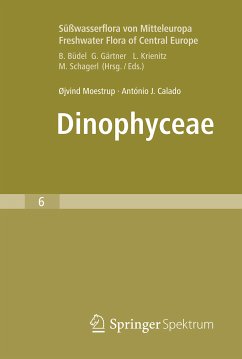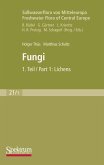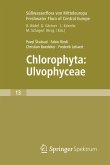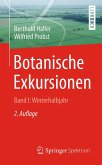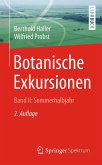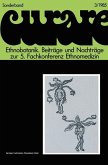It serves as a reference work for identifying dinoflagellates from fresh water by providing keys, detailed descriptions, and illustrations for all described species. The original descriptions have been consulted, and the original drawings, combined in many cases with more recent figures, have been used as the basis for the illustrations of the species. The introduction includes chapters on the history of dinoflagellate research, cell structure, ecology (by K. Rengefors and A. Kremp) and cell culturing (by G. Hansen).
Taxonomic studies of dinoflagellates began at the time of early light microscopists, and modern studies have shown that long-held views on the taxonomy are often unsatisfactory. Two new orders, Amphidiniales and Tovelliales, three new families, Amphidiniaceae, Gyrodiniaceae and Sphaerodiniaceae, and two new genera, Matvienkoella and Speroidium, are proposed. Seven new species and one new variety are described. Five new names and 79 new combinations are established.
The authors
Øjvind Moestrup - Professor at the University of Copenhagen, Denmark. His main field of research is on the diversity, ultrastructure and phylogeny of algae, microscopic species in particular, freshwater as well as marine species.
António José Calado - Assistant Professor at the University of Aveiro, Portugal. His main field of research is on the feeding mechanisms, fine structure (particularly the flagellar and pusular apparatuses), life cycle strategies and character evolution in dinoflagellates.
¿
Dieser Download kann aus rechtlichen Gründen nur mit Rechnungsadresse in A, B, BG, CY, CZ, D, DK, EW, E, FIN, F, GR, HR, H, IRL, I, LT, L, LR, M, NL, PL, P, R, S, SLO, SK ausgeliefert werden.
"The taxonomic part of the book is fairly easy to use, and has easily interpretable information. The illustrations are based on old and classic descriptions and drawings that were combined with more recent figures, so the drawings help the identification as well. ... In conclusion it can be proudly stated, that the readers have a book in their hands that is extremely helpful for everyone who wants to find their way in the world of Dinophyceae species." (I. Grigorszky, Acta Botanica Hungarica, Vol. 61 (1-2), March, 2019)

